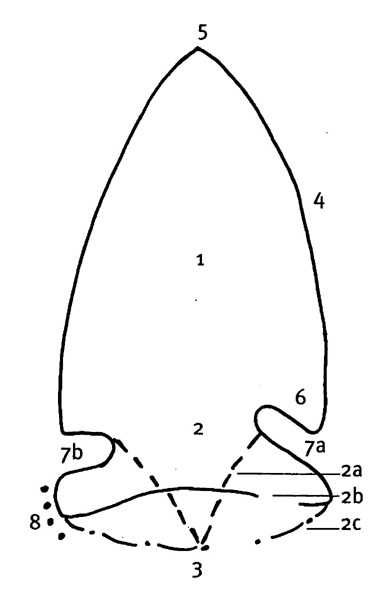Those stone head knife was handle to me by a freind in North Caroline from a family collection.
Projectile Point Features and Terminology

- Blade: The cutting portion of the point above the hafted stem.
- Stem: The modified bottom of the blade for hafting onto a shaft or handle.
- Contracting: A haft stem that tapers from the shoulder to the base.
- Concave: An edge (usually at the base) that curves inward.
- Convex: Outward curving edges.
- Base: The very bottom of the point.
- Edge: The sides of the blade (may be serrated, beveled [steep angle], pressure flaked, etc).
- Tip: The pointed top of the blade.
- Shoulder: The wide portion of the blade immediately above the stem.
- Notching
- Corner-notched: Notches oriented at an upward angle from the basal corners.
- Side-notched: Notches oriented perpendicular to the length of the point.
Lot Description
EXTIMATE Circa 8000-6000 BC. A spear formed of flint formed by early modern man (Homo sapiens) between 10,000 and 6500 years ago. The prehistoric craftsmen removed small pieces of rock or flakes from the core using a techniques called percussion flaking. This involved striking a portion of the core with a stone hammer. To make more elaborate tools such as arrow heads or spear points, the tool-maker had to do additional shaping and thinning. When the approximate shape was obtained, the final stage of thinning the point and sharpening the edges was accomplished by another technique known as pressure flaking. Here, small and thin flakes were pushed off the edges of the tool with an antler or bone punch. This technique required both skill and physical strength. Several of these finely-made arrow head and spear points have been found in sites as old as 10,000 years.
size big one: 2.2"
size for the point one: 1.5"
size for the dark one: 1.5"









